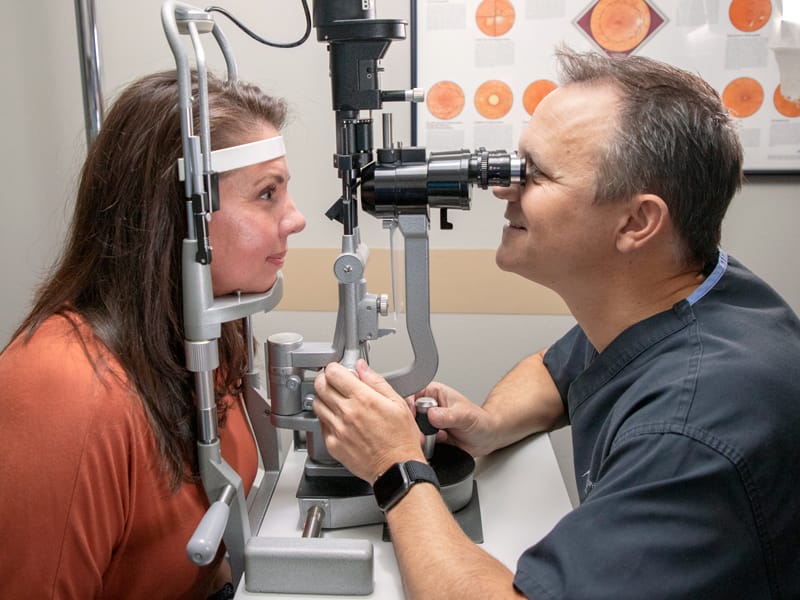Dermatochalasis
This is the long medical term for baggy eye lids. Dermatochalasis occurs most frequently in people past 50. Since tissues around the eyes are very loose and movable, this area is the most likely of all in the body for early wrinkles and droops. The cause of the disorder lies with the elastic fibers underneath the skins surface. These become stretched, and this stretching is accompanied by thinning and protrusion of the skin.

The soft, loose tissues of the upper lids are most affected by dermatochalasis. Sometimes this skin actually lies on top of the lashes, so some patients are able to keep their eyes open only by keeping the brow elevated with the muscles of the forehead and scalp. This may cause headaches and excessive fatigue, especially with reading. The upper portion of vision may also be cut off by this excessive tissue.
The lower lids are also affected, but usually to a lesser degree. They do not cause the functional problems of reading and general vision difficulties, as do the upper lids. However, baggy lower lids present a cosmetic concern for many patients.
Treatment
Dermatochalasis can be improved with eyelid surgery. In this surgery excess skin is removed, and sometimes the muscle underlying the skin is also taken. Occasionally deeper layers of fat are also excised. Scarring after surgery is usually minimal. These tissues are very forgiving and heal well.
Bruising and swelling may accompany the procedure. Ice packs for 24 hours help some. The skin stitches are removed sometime in the first week, depending on the patient's healing process.
The risks associated with surgery are small, but real. If too much skin is taken, difficulty closing the eye may result. This creates a dry eye and is very uncomfortable. Very rarely, loss of vision results from bleeding around the eyes. If pain is noted after the operation, immediate attention is required to prevent any lasting visual problems.
